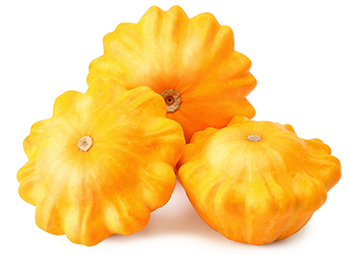
A Pot of Red Lentils
by Peter Pereira
Simmers on the kitchen stove.
All afternoon dense kernels
surrender to the fertile
juices, their tender bellies
swelling with delight.
In the yard we plant
rhubarb, cauliflower, and artichokes,
cupping wet earth over tubers,
our labor the germ
of later sustenance and renewal.
Across the field the sound of a baby crying
as we carry in the last carrots,
whorls of butter lettuce,
a basket of red potatoes.
I want to remember us this way—
late September sun streaming through
the window, bread loaves and golden
bunches of grapes on the table,
spoonfuls of hot soup rising
to our lips, filling us
with what endures.

Autumn
Autumn marks the end of the growing season. The sun is less intense. The air is dry, cool, and crisp. The sky is bright and blue. The trees begin to draw their energy in and downward. The leaves of the deciduous trees change color from the tips down. After their colorful display, the leaves turn brown and drop. They fall and become compost for the next growing season.
As the days get shorter and cooler, the squirrels are busy storing nuts and we humans order our firewood for the winter. Do you find yourself indoors a little more often, wearing heavier or more clothing, beginning to spend more time in quieter pursuits (perhaps reading a little more and rollerblading somewhat less)?
Autumn is a time for ending or winding down. If I have had a good harvest from my work for the year, I am able to slow down at work and at home. I review what worked and what didn’t, letting go of what didn’t serve and appreciating what did. I begin to move at a different, more contained, pace.
Chinese Medicine
In Chinese Medicine, Autumn corresponds to the Metal element– the gold, silver, minerals, and trace elements that give value to and are necessary for life.The autumn returns us to our essence, eliminating what we no longer need and making apparent what is most precious in our lives. It is a time of stopping to prepare for winter’s rest so that in the spring we will be able begin anew with vigor and freshness.
The organ systems that correspond to the autumn are the Lungs and the Large Intestine. The Lungs connect the inner and outer atmospheres. On a physical level they exchange oxygen and carbon dioxide; deep breathing and good air are essential to vitality and life. The lungs take in inspiration not only on a physical level, but also on a mental and spiritual level. As they expand we can receive air, and connect to people, emotions, and ideas. As we take in the brightness and colors of the season, we can stand in awe and appreciate the beauty around us; this feeling may be intensified by the knowing that this splendor is fleeting and the leaves will fall and the environment around us will change. The lungs support the rhythmic cycles of the body including breathing, elimination, sleep, the pace of the heart and blood circulation, the condition of skin and pores, and the maintenance of our overall energy.
The Large Intestine has the function of eliminating what is unnecessary or toxic to our bodies on all levels. We can choose what nourishes us from all the input around us (not just food, but thoughts, television programs, people we spend time with), extract what we need from all of this, and eliminate what we don’t need. Just as the trees don’t hold onto their leaves through the winter, we need to let go of what is no longer necessary; then we have made space for the new to come in the spring.
As nature moves into a time of rest, we can learn from her to do the same.The period of peak activity, summer, is past. It is time to bring our energy in, to contain it until spring.
Suggestions for living in harmony with the autumn season
- Go to bed an hour earlier. The body needs more rest in the cooler temperatures to help it conserve heat and stave off cool weather illnesses. (Nature gives us a large hint by decreasing the hours of daylight.)
- As the weather cools, wear a hat, a scarf, a turtleneck sweater, warm socks. The lungs can be damaged by cold and damp so it is important to keep the head, neck, chest, and feet covered and warm during the cool and cold weather.
- Go through your closet, desk, garage, junk drawer, basement, medicine cabinet (pick one or more), and get rid of what you no longer need. Throw out what is no longer good, and donate or pass on the rest.
- Take time each day to breathe in and out slowly and deeply.
- Select a deciduous tree that you can see from your window. Observe it daily from September through November, noting the minute and large changes.
- Drink chai or mulled apple cider.
- Balance aerobic exercise with stretching and breathing (think yoga, tai chi, and qi gong).
- Meditate. Start with 5 minutes a day, and gradually expand the time. Notice the changes in your life once you start.
- Practice acknowledgment.
- If you tend toward perfectionism, make a deliberate mistake and notice that the world does not end.
- Each night write a few sentences describing something wonderful you saw or noticed that day.
- Prune your activities. What are you doing that no longer nourishes you? Create an empty space into which, in time, something new can grow.
Changes in Eating:
In the fall we need a richer, denser diet to provide us with additional heat as the external environment cools. Shift toward more cooked foods, limiting or eliminating the amount of raw food you eat. Eat soups and stews. Increase your protein, whole grain, and fat intake a bit.

Fresh Produce to Eat in Autumn
| Apple | Beets | Broccoli |
| Broccoli Rabes | Brussels Sprouts | Cabbage |
| Carrots | Cauliflower | Celery |
| Chard | Chicory | Cranberries |
| Cucumbers | Dates | Eggplant |
| Escarole | Fennel | Garlic |
| ginger Root | Grapes | Horseradish |
| Kale | Kohlrabi | Leeks |
| Lettuce | Mushrooms | Melons |
| Onions | Oregano | Parsley |
| Parsnips | Pears | Peppers (sweet) |
| Pomegranates | Potatoes | Pumpkins |
| Radicchio | Rutabagas | Shelling |
| Beans | Shallots | Sweet Potatoes |
| Turnips | Winter Squash | Yams |
Here are a couple of recipes to get you started with your fall cooking. First one with beets, a vegetable that my husband says “tastes like dirt;” and he likes this soup.
Recipes
Russian Cabbage Borscht
from allrecipes.com
- 1 1/2 cups thinly sliced potatoes
- 1 cup thinly sliced beets
- 4 cups stock or water
- 2 Tablespoons butter
- 1 1/2 cups chopped onion
- 1 tsp. caraway seed
- 2 tsp. sea salt
- 1 celery stalk, chopped
- 1 large carrot, sliced
- 3 cups coarsely chopped red cabbage
- black pepper to taste
- 1 tsp. dried dill weed
- 1 Tablespoon cider vinegar
- 1 Tablespoon honey
- 1 cup tomato puree
- sour cream
- olive oil
- 1 cup chopped onion
- 4 cups matchstick sized cut carrots
- 8 cups packed chopped kale
- 2/3 cup raisins
- 3 cloves garlic, minced or pressed
- 4 tsp. finely grated ginger
- zest of 1 lemon
- 1 tsp. sea salt
- 1 Tablespoon lemon juice or to taste
- 1/2 cup toasted walnut pieces
- cooked basmati rice or other hearty grain
adapted from a recipe from Bruce Aidells in Parade Maganize
- olive oil
- 3 cups slivered onions
- 6 large cloves garlic, minced
- 1 Tablespoon sweet Hungarian paprika
- 1 teaspoon sea salt
- 1 teaspoon tumeric
- 1 teaspoon ground coriander
- 1 teaspoon ground fennel
- 1/2 teaspoon ground cumin
- 1/2 teaspoon ground ginger
- freshly ground black pepper to taste
- 2 cups canned diced tomatoes
- 1 cup water
- 3 Tablespoons lemon juice
- 8 boneless, skinless chicken thighs
- 1 large eggplant
- 2 tablespoons fresh flat leaf parsley
- 1/3 cup slivered, blanched almonds
- cooked rice
- olive oil
- 1 sweet onion, chopped
- 3 cloves garlic, minced
- 2 – 3 yukon gold potatoes
- 1 acorn squash
- 1 quart chicken stock
- sea salt and freshly ground pepper to taste
- 1/2 bunch kale, coarsely chopped
- 1/4 cup sage
- 1 1/2 cups cornmeal
- 1/2 cup spelt flour
- 4 teaspoons baking powder
- 2 Tablespoons unrefined cane sugar
- 1/2 teaspoon sea salt
- 1 cup milk or 3/4 cup plain rice milk
- 1 egg, lightly beaten
- 1/4 cup melted butter
A Long and Gracious Fall
by David Budbill
A long and gracious fall this year.
manured, tilled, smooth, and waiting.
Mower and tiller serviced and put away.Smoker put away, as is the summer table.
Prayer flags, windsocks and their poles: down.
Twenty-foot homemade badminton poles,
peace flag at the top of one, store-bought net—
all down and put away for another year. No more
outdoor summer chores.Fall planting — peonies and tiger lilies — done.
Summer flower stalks removed, beds mulched,
a blanket for the cold. Fall pruning done.Woodshed roof hammered down and sealed again.
Cellar closed. Drive staked and flagged so the
snowplow knows where to go.What else is there to do? Finally, for once, we are ready
for the snow. Ready now to come inside. Time now for
words and music, poems and shakuhachi. Time now
to light some incense, sit and stare at candlelight.
